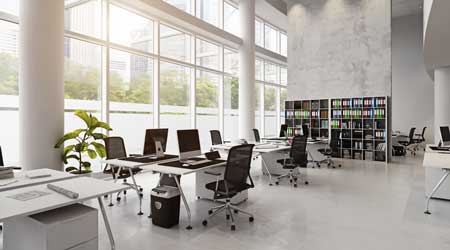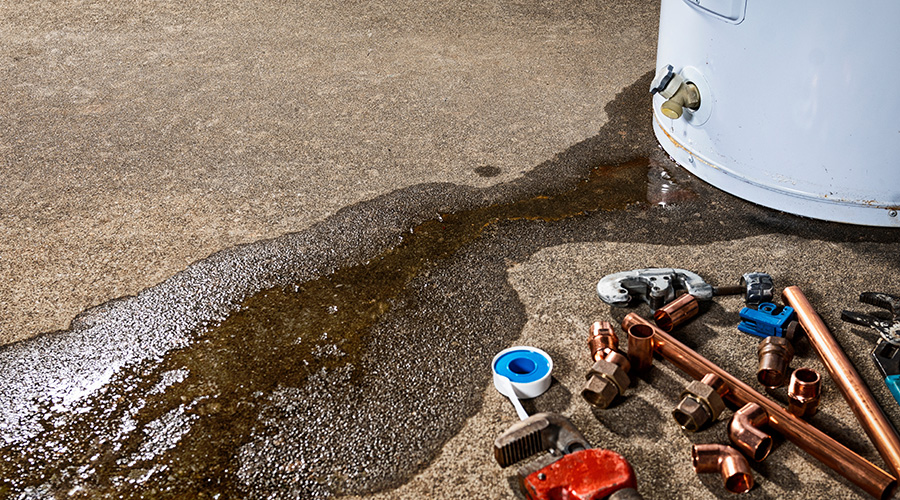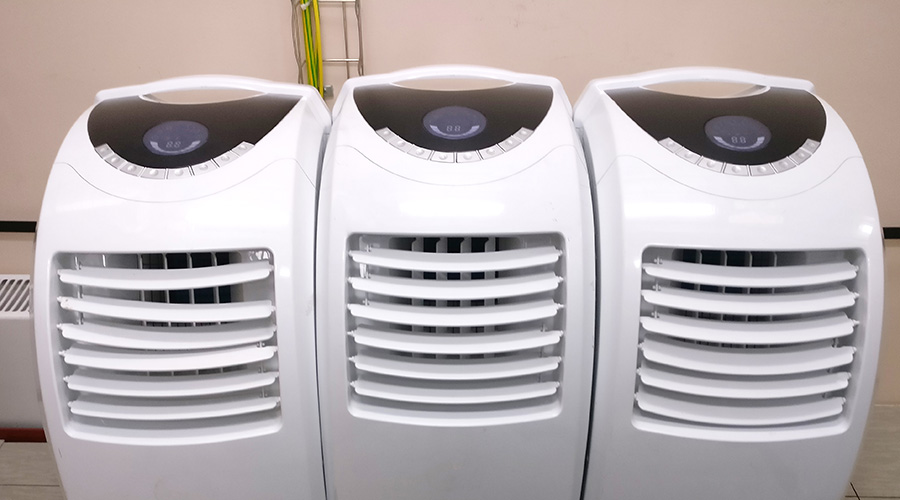5 Steps Buildings Should Take to Prevent Coronavirus Spread
What can actually be changed regarding HVAC and building design to help reduce the spread of COVID-19? Here are five specific steps.
Fear and anxiety is high among employees waiting for answers from their place of business. At this stage, many are asking, what will the future work environment look like? As corporate COVID-19 taskforces across the nation plan for an eventual transition to return employees back to the office safely, which is still far into the future for many, there are a variety of questions that arise. Many are working diligently to implement safe and effective ways to return employees to work. Prior to the full workforce attempting to return, a common question has been: “What building modifications must be made, if any?” Given the airborne nature of highly contagious viruses like this coronavirus, could a large investment in improving a building’s HVAC system with the intent to reduce the spread of contaminants actually help? How much impact would it have? If a given building has improved HVAC items, does it help? Yes! How much? It is hard to say.
For the 8-9 hours the majority of employees spend in an average office each day, an improved HVAC system could indeed bring better air quality with the exchange of more fresh clean air, therefore exposing inhabitants to fewer contaminants. Due to the way this particular virus is transmitted through human and surface contact, the HVAC system couldn’t prevent someone from getting coronavirus, the flu, or even the common cold though, it just decreases the chances of exposure for the time spent in a building. We have learned that even working in a state-of-the art building with the highest level of systems and safety precautions, a simple stop for coffee on the way into work, running errands, grabbing lunch, and/or attending a meeting at a client’s office are all ways to increase risk of exposure.
At this critical point in history, organizations are carefully examining every element necessary to provide the safest environment for employees returning to the brick-and-mortar work locations. Here are five strategies facility managers should consider in current and future building plans:
1. Increase the air change rate in buildings and have the ability to flush out air.
- This means that more outside air is coming into the building, replacing air in the building with outside air. This outside air dilutes or removes contaminants in the space faster. The more outside air that is brought in, the higher the air change rate.
- Having the ability to flush out a building. The air handling units would bring in 100% outside air, which would then be exhausted out of the building. This change-over of air would occur several times, typically for a short duration in the evening when the building is unoccupied. This would help remove contaminants and pollutants introduced to the air while the building was occupied.
2. Add higher levels of filtration
.
- Provide a higher level of filtration, such as Activated Charcoal, on air handling units that remove volatile organic compounds (VOC) gases and vapors through the process of chemical adsorption. Given many unknowns on all potential ways the coronavirus is spread, it is unknown how filtration levels would impact this particular disease, but would help health in general.
- Add ultraviolet light (UV-C) inside air handling units serving areas with larger amounts of people, like assembly halls or college cafeterias. UV-C lights at the right intensity are able to kill bacteria or virus. Although, the intensity required to kill COVID-19 specifically has not been determined yet.
3. More separation within buildings.
- Instead of one or two large air handling units serving a building, provide additional small air handling units and isolate areas, so that contaminants aren’t spread between these zones.
- Also by pressurizing each zone we ensure air doesn’t flow between them.
4. Provide isolation-type work spaces for people to use.
We all see people coming into work when they are starting to get sick or know they are sick, but have to stay to complete an urgent task. Companies could provide several closed offices with a high air change rate and their own filtration that workers can sign up to use when they want to isolate themselves from their co-workers to help prevent the spread of any illness.
5. Retrocommissioning
HVAC systems are typically complex and have sophisticated controls. Over time, minor issues such as sensors or control devices that are out of calibration or no longer working, air balance issues, or issues with the control sequences, can affect the overall performance of the building. When a building undergoes retrocommissioning, a team goes into the building and does intensive testing of the HVAC systems and controls to ensure the building is operating as intended. By doing this, we are ensuring there are no unforeseen conditions occurring that would help spread the virus instead of helping reduce our exposure to the airborne contaminants.
Over the next few months we are all hoping our country opens back up safely. Our new normal is going to be different though, we just aren’t sure how much yet. The same goes for HVAC systems. This pandemic will most likely lead to changes in how we design buildings and could also lead to changes in codes and standards. One organization, The American Society of Heating Refrigeration and Air Conditioning Engineers (ASHRAE), has established the creation of the ASHRAE Epidemic Task Force to help use their resources to address the challenges of the current pandemic and future epidemics as it relates to the effects of heating, ventilating and air conditioning system on disease transmission.
Above all, the HVAC-related ideas and design discussion points are potentially one way to help reduce risk to our population, but it is important to note that this does not disregard the other important evolving CDC guidelines to combat human-to-human transmission including, proactive quarantine/screening measures, face coverings/masks, human hygiene, and sterilization of all surfaces. In planning for a safe return to work locations, the leadership teams must always remaining current with what the CDC is recommending at all times.
Cathy Crowley, PE, CxA, LEED AP BD+C, is mechanical director at Mason & Hanger, a worldwide architectural and engineering firm.
Related Topics:












